Monday, 10:00am
11 November 2024
A feast for the eye
Looks Delicious! Exploring Japan’s food replica culture
From 2 October 2024 to 16 February 2025. Japan House London, 101-111 Kensington High Street, London, W8 5SA‘Looks Delicious!’ explores the mouth-watering art of shokuhin sanpuru – Japanese replica food
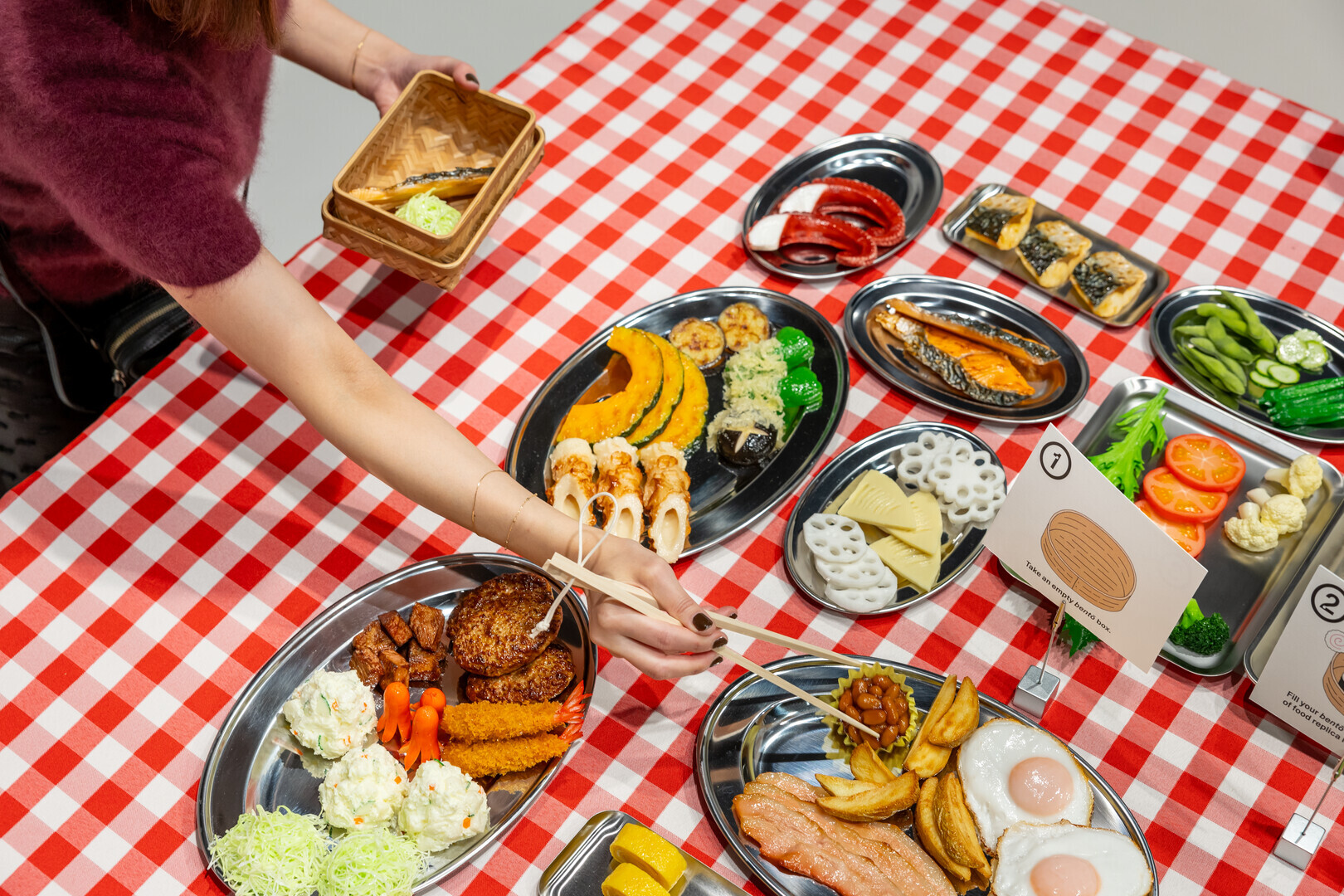
On entering the exhibition my first encounter with a replica food is a plate of onions, writes Janet South. These are so convincing that the caption alongside warns: ‘Remember these are replicas. Please do not try and eat them!’ The detail is so mind-blowingly realistic that I can’t believe my eyes. However, this is just the exhibition’s amuse-bouche because what follows is an incredible journey through a feast of Japanese food replica artistry and expertise.
Top. Bento box assembly. Photo by Japan House.
Right. Display of onions. Exhibition photos by Janet South except where noted otherwise.
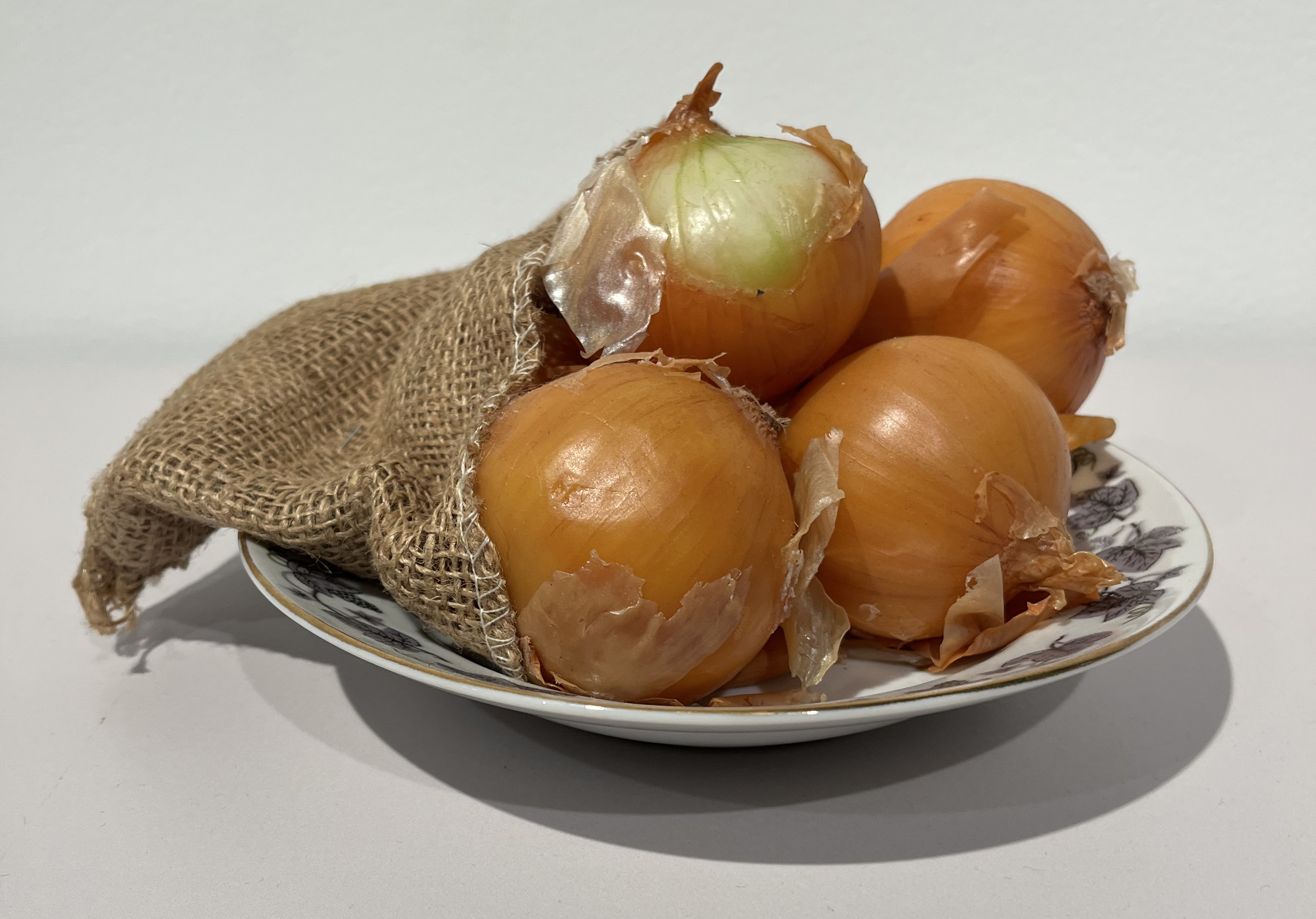
The use of food replicas began in Japan in the early twentieth century due to the culture of dining halls in department stores [shokudō] which served cuisine from overseas. The food replicas helped people identify the new, unfamiliar Western and Chinese dishes featured on the menus and the displays were a popular attraction. Food replicas are now used extensively all over Japan.
Department store dining hall in Japan.
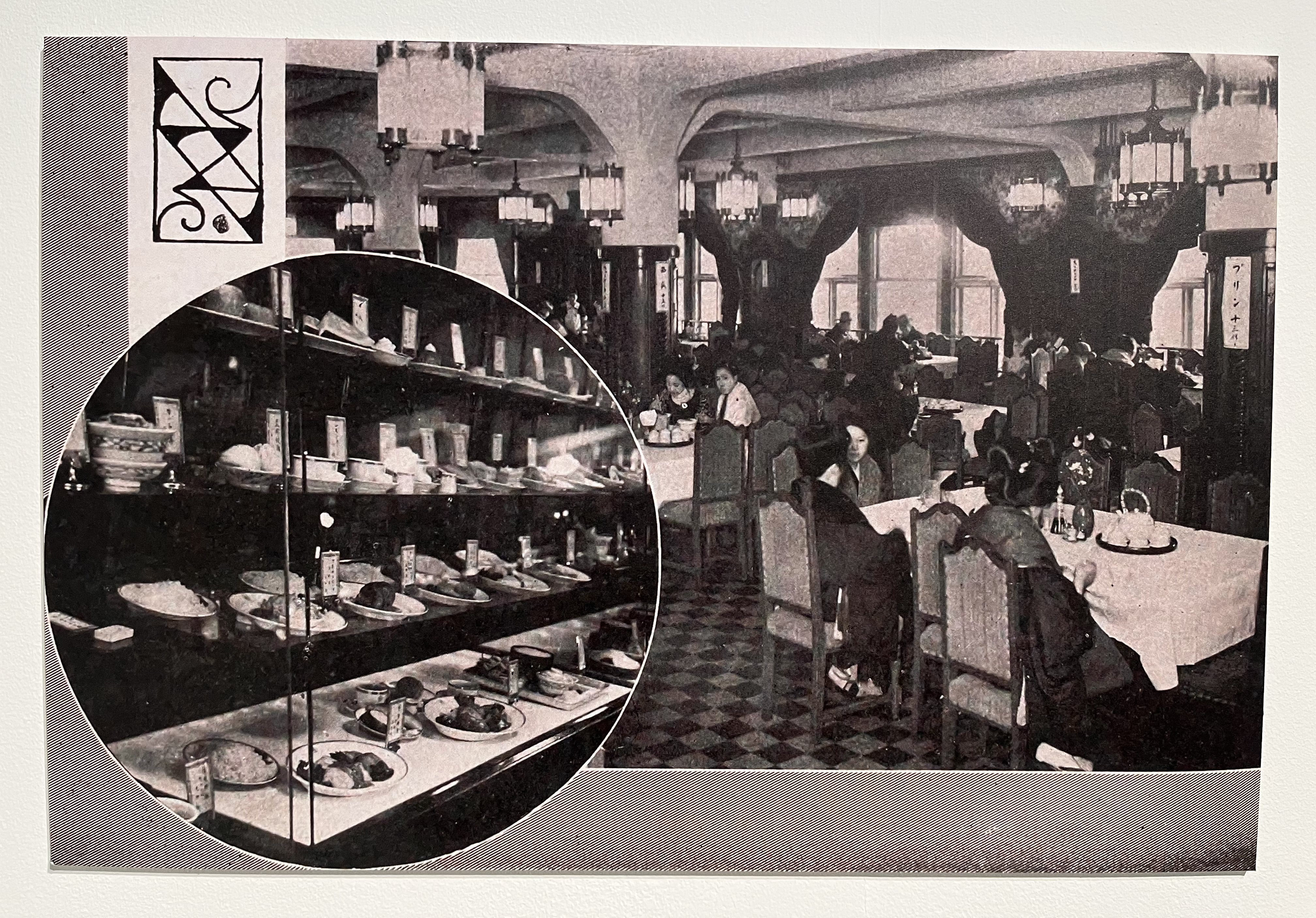
The commercialisation of food replicas was pioneered by Iwasaki Takizō who established his own company in Osaka to manufacture and sell replica food. Today the Iwasaki Group consists of three companies in Tokyo, Osaka and Gujō Hachiman and holds 70 per cent of the market share.
Food replicas are made from PVC which has been cast from silicone moulds and, although the materials have been updated, (they used to make moulds with agar and cast in wax) the process is still pretty much the same. The hardened model is hand-painted by skilled artists who use airbrushes, stencils and paintbrushes to add fine detail. This detailed process is documented stage by stage from casting to colouring. The array of colours reads like a Farrow and Ball catalogue with tones of ‘roast beef’, ‘croissant’ and ‘mackerel’ marked on the labels. The challenge for the craftspeople is to not only produce a realistic replica but recreate people’s expectations and memories of food at its freshest and most appetising moment. A delightful animation by Yamamoto Hikaru shows the process of making prawn tempura and lettuce replicas.
Paint colours labelled ‘mackerel’, ‘bok choy’ and ‘croissant’, etc.
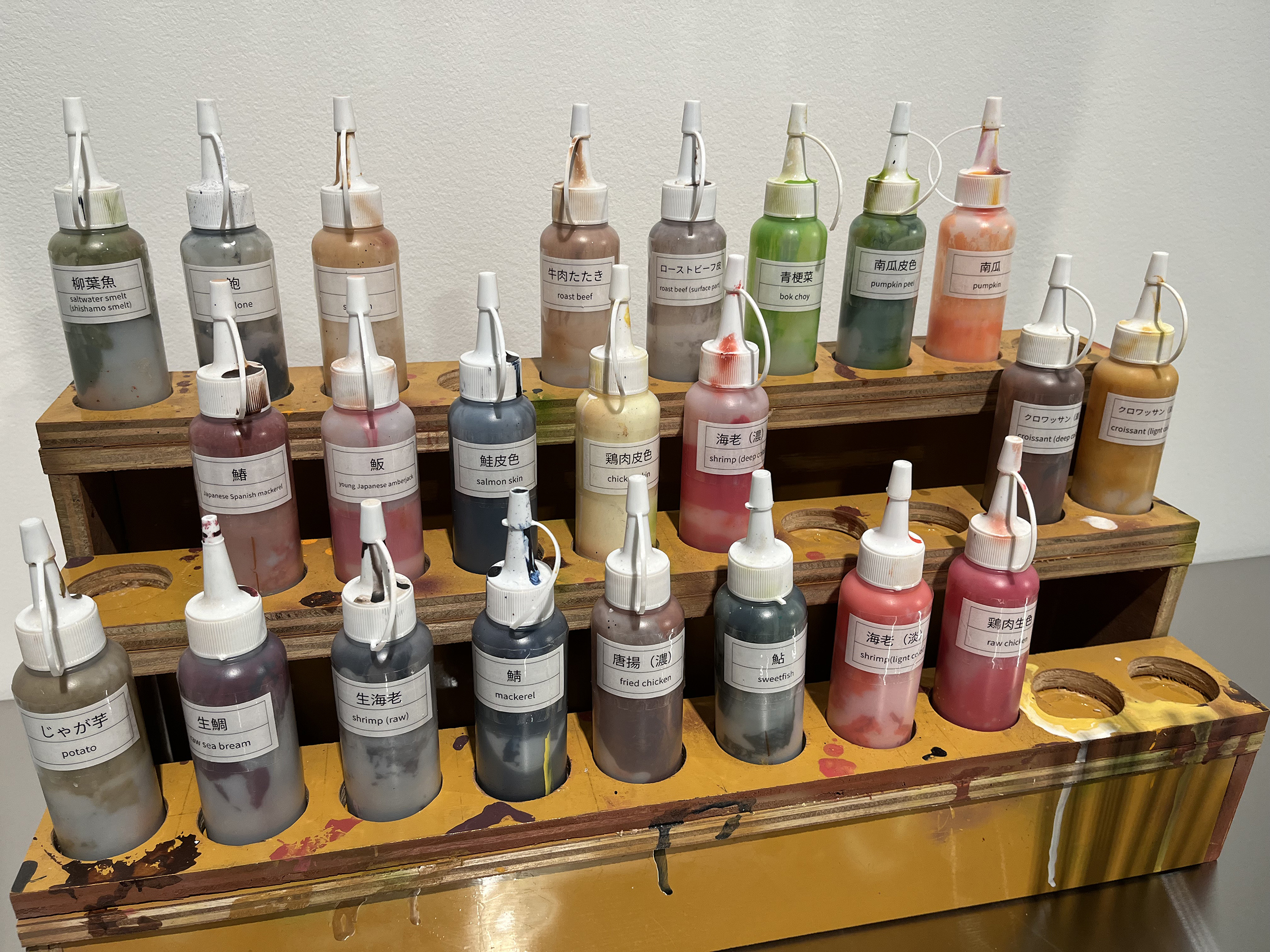
Stages in production, still from animation.

The centrepiece of the exhibition is a food map of Japan. Iwasaki Ltd has been especially commissioned by Japan House to recreate a speciality dish from each of Japan’s 47 Prefectures (administrative divisions). The replicas, which have been recreated using moulds from the dishes themselves, are displayed on a large Japan-shaped table like a giant buffet and includes a chrysanthemum of translucent fugu (pufferfish sashimi) from Yamaguchi, a glistening bowl of Sanuki udon topped with a glossy egg and zesty Japanese mandarins from Ehime together making a mouth-watering banquet.
Fugu. Photo by Japan House.
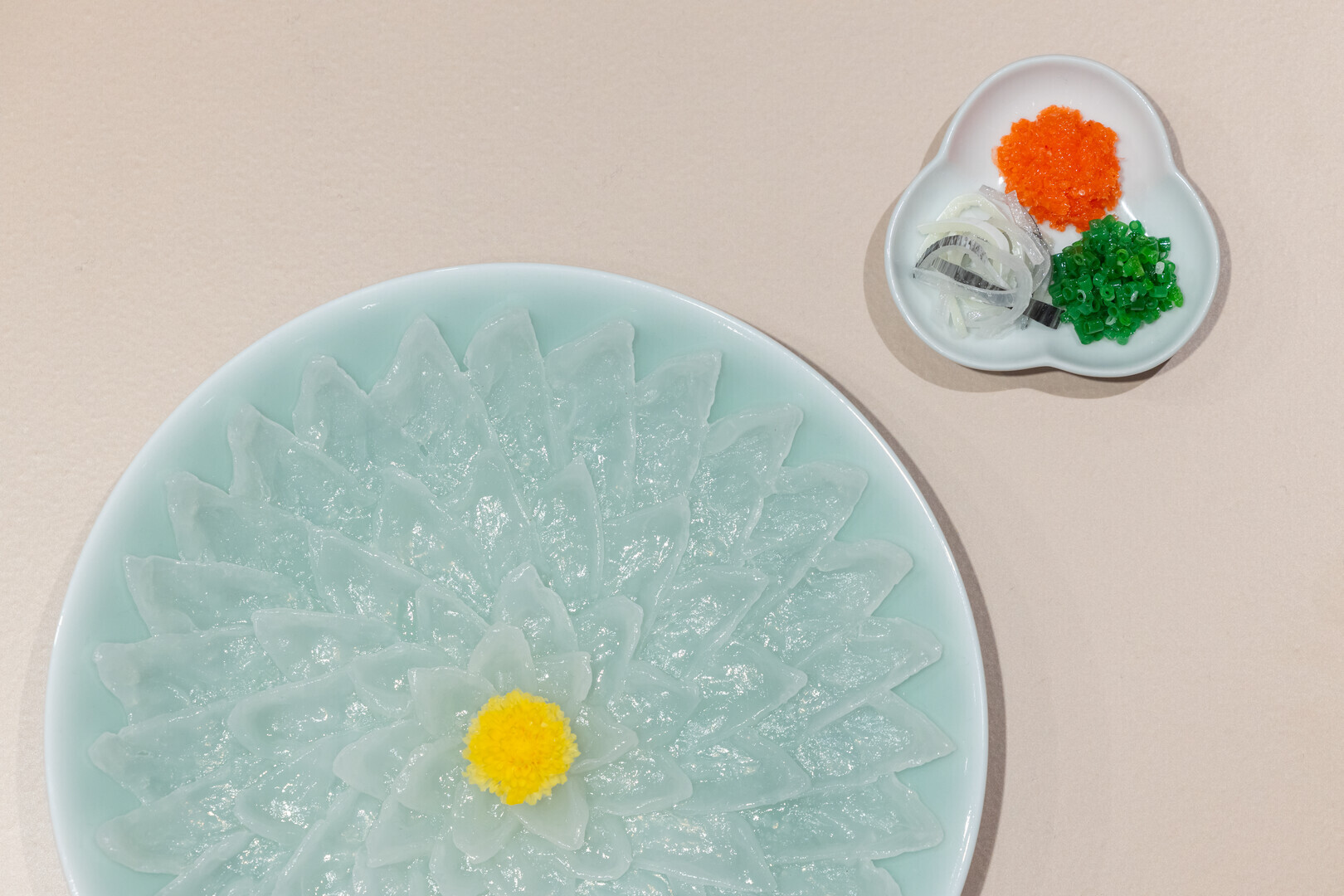
Alongside making accurate replicas, the craftspeople at The Iwasaki Group hold in-house competitions elevating their artistry to create hyper-realistic, witty and fun art pieces. The winners from some of these competitions are displayed and include a drunken crab slurping from a glass of beer, an English breakfast mid-consumption (including a floating cheese on toast) and a giant burger stack which looks like it has been lifted from a Scooby Doo cartoon.
Giant burger.
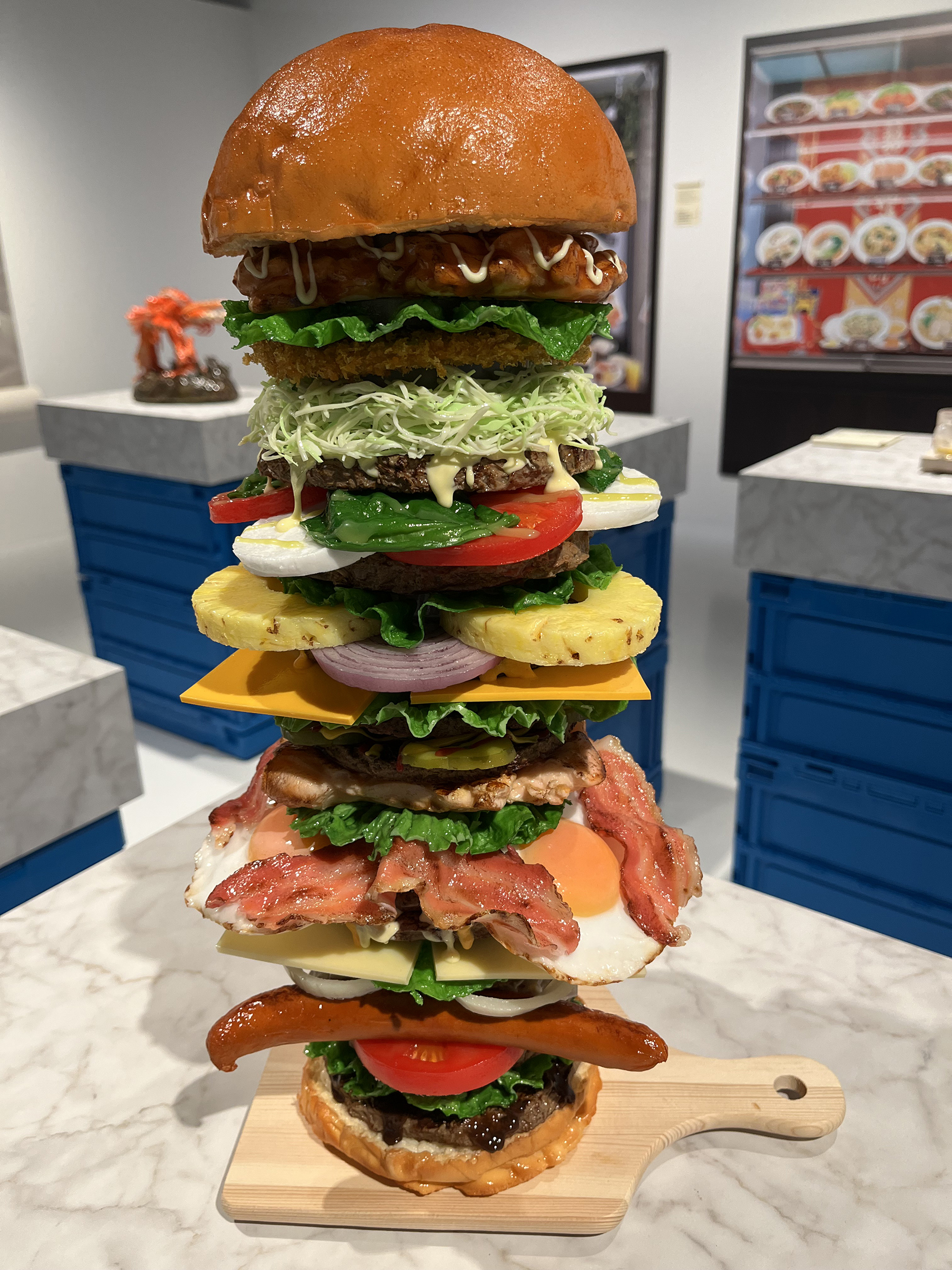
Food replica production extends beyond its function in the restaurant business. They are also used in education, hospitals and clinics to help teach nutritional practices such as portion control and demonstrate food preparation techniques for specialist diets. They are also used as reference point for farming and food production quality control by demonstrating desirable colour, size and consistency.
Carrot cutting.
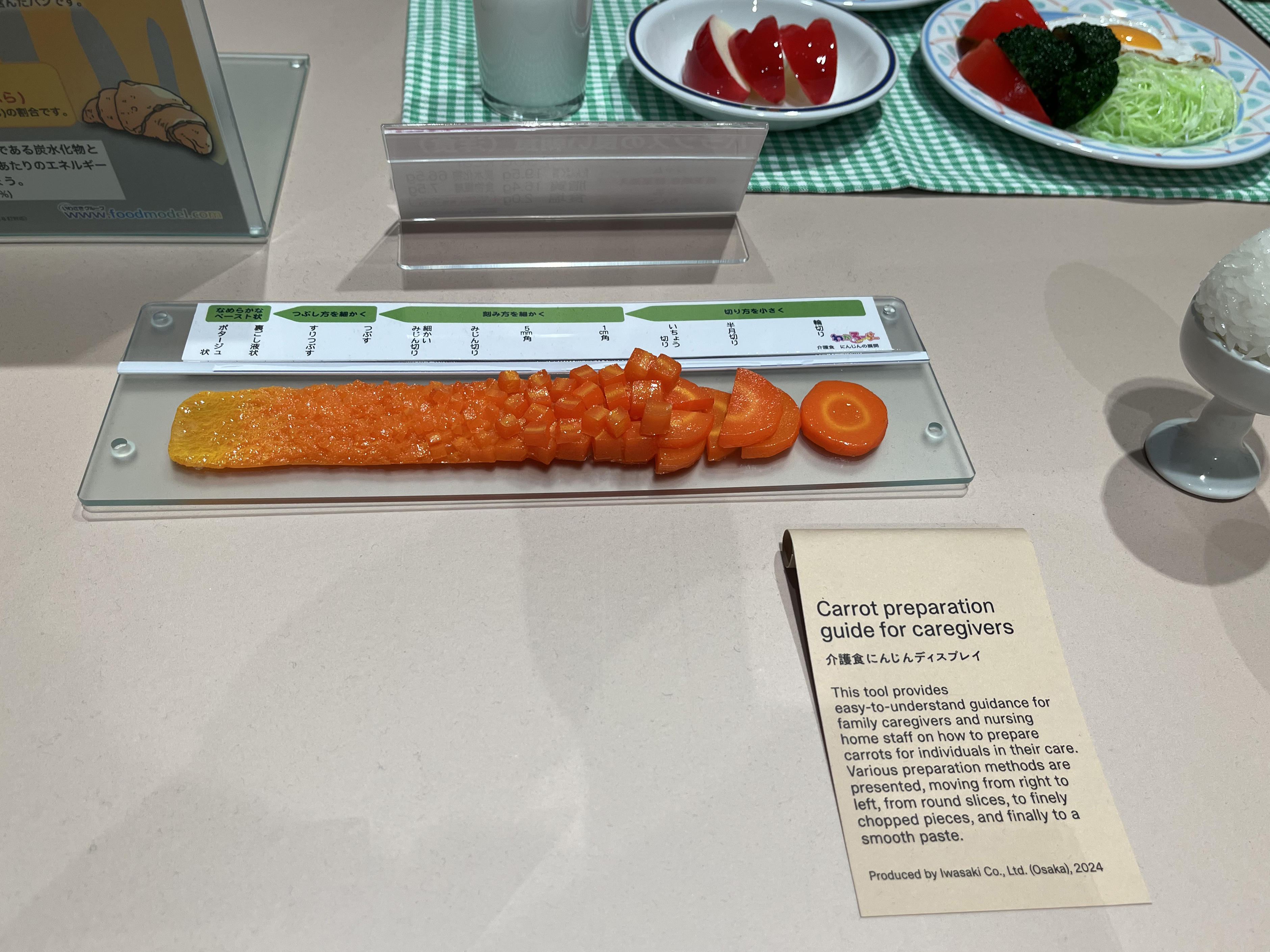
The exhibition ends with a build-your-own bento box and visitors can select from a wide range of replica ingredients to make their own customised meal. There is an opportunity to photograph your dish (and share on social media) before reluctantly replacing the pieces and going away hungry.
Janet’s bento box.
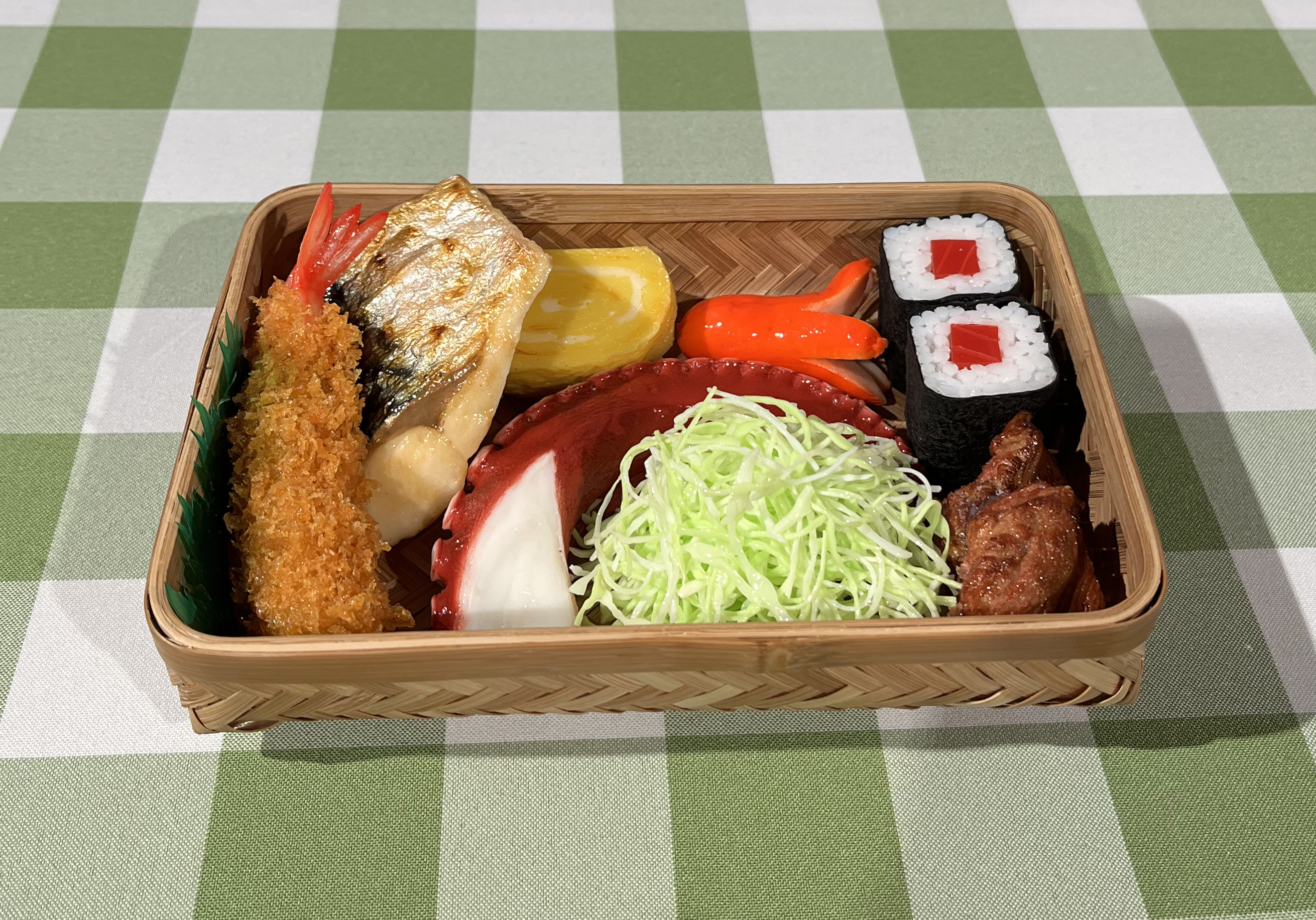
The exhibition is cleverly designed using the food crates from the Iwasaki factory. This is complemented with simple effective scrolls which caption the displays alongside some fun infographics and animation.
Janet South, business manager, Eye Magazine Ltd.
CREDITS
Art direction: Harada Yūma (UMA/Design farm)
Graphic design: Nisho Ryōsuke, Ōsumi Hazuki (UMA/Design farm)
Exhibition design: Nishio Takeshi
Videography: Anami Haruki
Photography: Masuda Yoshireō
Animation and illustration: Yamamoto Hikaru
Project management: Yamada Yū, Sakai Sayaka (method inc.)
‘Looks Delicious! Exploring Japan’s food replica culture’ at Japan House London, 101-111 Kensington High Street, London, W8 5SA is free and open to all. A small number of events require a participation fee.
Much of this exhibition has been created thanks to the cooperation of those at Iwasaki Co., Ltd. (Osaka), Iwasaki Co., Ltd. (Tokyo), Iwasaki Mokei Seizo Co., Ltd. (Gujō Hachiman).
Eye is the world’s most beautiful and collectable graphic design journal, published for professional designers, students and anyone interested in critical, informed writing about graphic design and visual culture. It is available from all good design bookshops and online at the Eye shop, where you can buy subscriptions and single issues.
